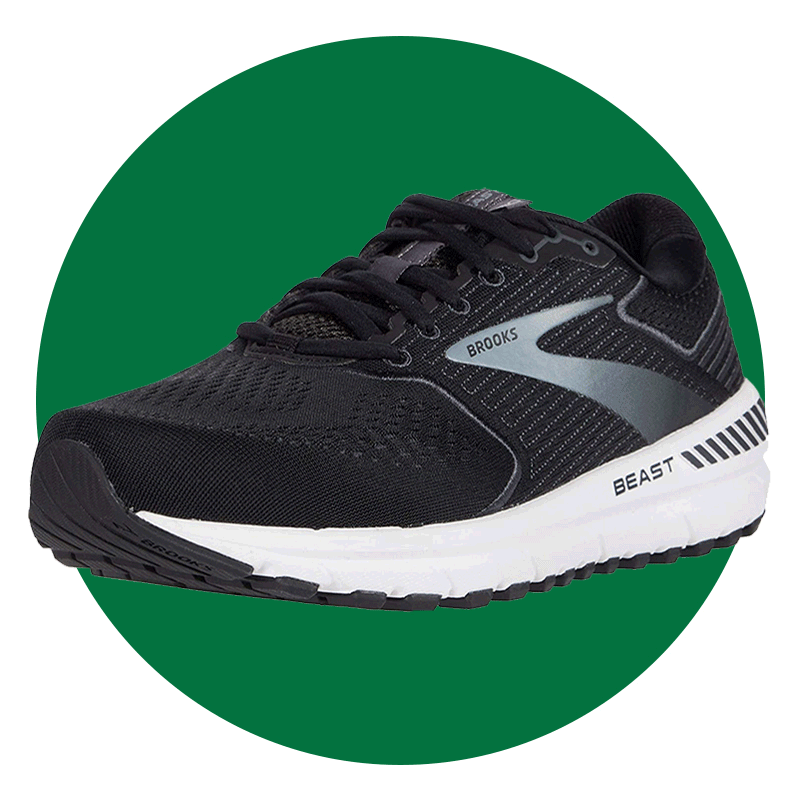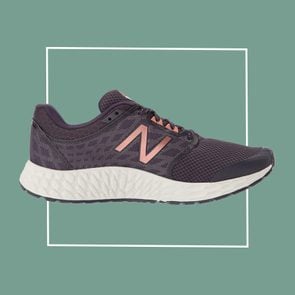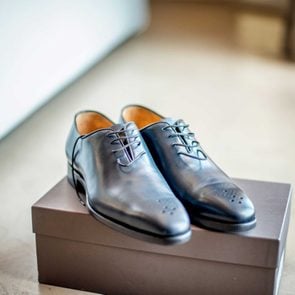Brooks Walking Shoes Are the Only Walking Shoes This Podiatrist Recommends
Updated: Nov. 15, 2021
If you're shopping for new walking shoes, this podiatrist says Brooks walking shoes might be your best option. Here's why.
The right shoes are the key to foot health
Whether you’re actively trying to get in your 10,000 daily steps, chasing after little ones all day long, or going on a vacation with sightseeing tours, your footwear can undoubtedly make or break your day. Choosing the right pair of shoes affects the long-term health of your feet, ankles, knees, and hips.
Instead of finding out the hard way that most sandals, fashion sneakers, and (gasp!) high heels aren’t a healthy foot choice, it’s far better to plan ahead by outfitting yourself with the proper footwear for the task at hand—er, at foot. For instance, did you know wearing a running shoe for walking is just one of the ways podiatrists say you’re killing your feet?
That’s why Timothy Oldani, DPM, FACFAS, a St. Louis-based podiatrist with Missouri Foot and Ankle, always recommends Brooks walking shoes to his patients. “This is because Brooks shoes are actually designed for the activity of walking,” he explains. “They are not simply running shoes with another name.”
Why a podiatrist recommends Brooks walking shoes
There’s a lot to love visually about Brooks walking shoes, thanks to the brand’s trendy styles, but what really impresses Dr. Oldani is what lies beneath the surface. And these design features also explain why he’s worn Brooks to work every day for years.
“Of all the shoes I have come across, Brooks walking shoes seem to be the most versatile,” he says.
“They are a good choice for patients with both low and high arches. People with low arches benefit from the motion control that limits pronation, which is incorporated into the midsole. And people with high arches need added shock absorption, which is incorporated in the heel.”
Another common problem Dr. Oldani sees in his practice is plantar fasciitis, which is pain on the bottom of the heel where the plantar fascia ligament inserts into the heel bone.
“Brooks walking shoes provide both shock absorption and maximum support through the arch, both extremely important in treating and preventing plantar fasciitis,” he says.
Finally, Brooks walking shoes also help prevent excess motion with built-in support on both sides of the heel.
“When people become tired during exercise, the foot fatigues, which can lead to excess motion,” Dr. Oldani explains.
“In general, excess motion will lead to increased inflammation and eventually injury. By limiting this motion, Brooks walking shoes can help to prevent overuse injuries and keep patients exercising.”
Which style of Brooks walking shoes to try

Dr. Oldani has a few favorite styles of Brooks walking shoes that he frequently recommends to patients.
First on his list is the Addiction Walker 2 (available in men’s and women’s), which he calls a “prototypical walking shoe” because it provides maximum support to anyone with low to neutral arches.
“It also provides significant cushioning to aid in shock absorption for patients with a higher arch,” he says. Plus, the slip-resistant sole is helpful for all types of terrain, from concrete sidewalks to natural hiking trails.
His other recommendations include Brooks Beast 20 (men’s) and Brooks Ariel 20 (women’s), because they both provide cushioning and maximum support while being a bit lighter than the Addiction Walker 2.
Additionally, both of these shoes have earned the seal of acceptance from the American Podiatric Medical Association. With this kind of acclaim from experts, you can feel confident that you’ll start off on the right foot with your new Brooks walking shoes purchase.




















